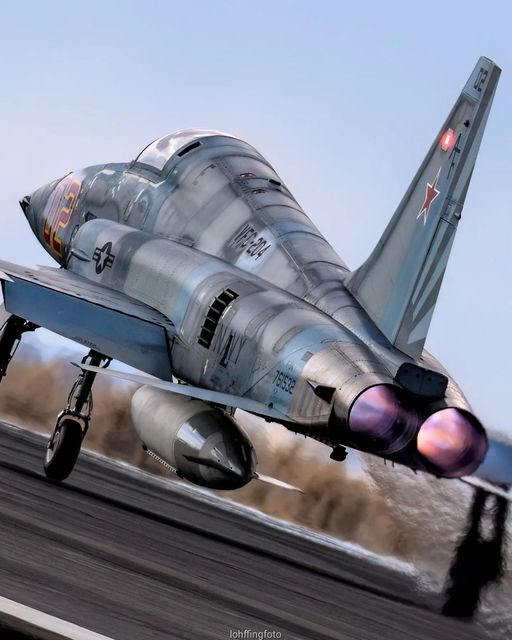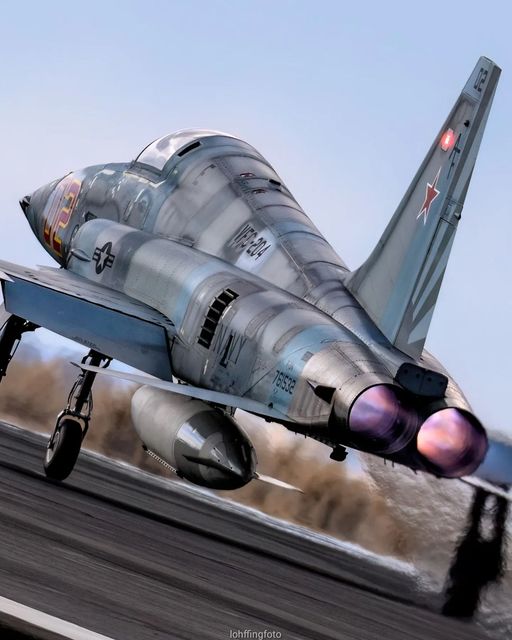
The F-5E “Tiger” is one of U.S. aerospace industry’s largest export successes. Designed as a budget lightweight fighter, the F-5E is still operated by many nations around the world despite the availability of more modern fighters.
Here’s What You Need To Remember: Brazilian experts stress that the FAB’s capability gap with neighboring air forces was only narrowed by the upgrade and that the F-5EM still remains an outclassed fighter in modern air combat due to its shortcomings and old-school design. Regardless, it was the best the FAB could do on a limited budget and the resulting craft was quite good for the money spent.
The F-5E “Tiger” is one of U.S. aerospace industry’s largest export successes. Designed as a budget lightweight fighter, the F-5E is still operated by many nations around the world despite the availability of more modern fighters.
Its continued service is enabled by miniaturization of electronics, which allows for more powerful radars and more systems to be integrated into the same spaces as the original system. This approach is exemplified by the F-5EM operated by Brazil, one of the most advanced variants of the F-5E flying today.
Brazil first acquired F-5Es in 1974 after comparing it to rival NATO light fighters like the Harrier, Jaguar, Fiat G.91 and A-4 Skyhawk. Forty-two units were purchased originally, followed by twenty-six more in the 1980s.
These aircraft served in without much modification until CRUZEX I aerial exercise in 2002. The exercise simulated conflict between the Brazilian Air Force (FAB) and a French Armee de l’Air force equipped with Mirage 2000s with E-3 Sentry AWACS support. The results were abysmal, with France expected to take air superiority in a real conflict despite some good simulated kills by FAB Mirage IIIs.
This sparked a significant push to modernize the FAB’s capability to defend Brazil’s airspace. Modernization of the Mirage III was explored but deemed to be cost ineffective. The F-5E showed much more promise.
In the 1990s, Chile, facing a similar need to modernize, created their own variant, the Tiger III Plus with assistance from Israel Aircraft Industries. A similar program with newer technology could be done with the FAB’s F-5Es.
The program began in the 2000s when a contract was awarded to the Brazilian firm Embraer to modernize forty-six F-5Es with European and Israeli technology. The key aspect of the modernization was to “extend” the legs of the F-5E from being a short-range “point defense” fighter to something that could cover more ground over Brazil’s rather large borders.
To this end, the radar was upgraded to the SELEX Grifo-F, which involved lengthening the nose cone of the aircraft to account for the larger radar antenna. But while the new radar was better, the F-5EM was designed with a secure data link to connect to FAB E-99 AWACS aircraft and ground radars, which were envisioned to vector the F-5s onto a target.
The role of the data link in FAB doctrine is significant. In addition to the dominance displayed by the French Mirages working with E-3s during CRUZEX, the FAB always favored vectoring their fighters from more powerful radars due to poor experience with the original F-5E radar. During a night intercept of a British Vulcan bomber in 1982, the F-5E’s onboard radar was unable to effectively search for the massive aircraft, the fighters were reliant on ground radar.
To take advantage of the additional range given by the data link and radar systems, the Israeli Derby active-radar medium-range air-to-air missile was integrated into the F-5EM. While lighter and shorter ranged than heavier missiles like the AMRAAM and R-27, the missile gave the FAB much-needed beyond-visual-range capability in air-to-air combat, the third nation after Chile and Venezuela to gain such capability.
Many other systems were added or upgraded on the F-5EM. In addition to the Derby, Israeli Python III short-range missiles were integrated. The Israeli DASH helmet mounted display was installed in the cockpit to cue those missiles, making the F-5EM a formidable close range fighter.
A radar-warning receiver, onboard oxygen generation system, hands-on throttle and stick, and INS/GPS navigation are all included. The addition of all these systems came at a cost though. The starboard M39A2 20mm cannon was removed to make space for electronics in the jet.
Finally to address the F-5E’s meager internal fuel capacity, provision for air-to-air refueling was added.
The F-5E modernization program continued through the 2000s and 2010s, with the final jet being delivered in 2013. Eleven additional F-5Es were acquired from the Jordanian Air Force in 2009 to increase the number of the type in FAB service.
The type is expected to serve on to 2025, with the integration of the new A-Darter beyond visual range air-to-air missile expected to happen soon. The new Gripen Es being acquired by the FAB are expected to supplement the shorter ranged F-5EMs.
Brazilian experts stress that the FAB’s capability gap with neighboring air forces was only narrowed by the upgrade and that the F-5EM still remains an outclassed fighter in modern air combat due to its shortcomings and old-school design. Regardless, it was the best the FAB could do on a limited budget and the resulting craft was quite good for the money spent.
